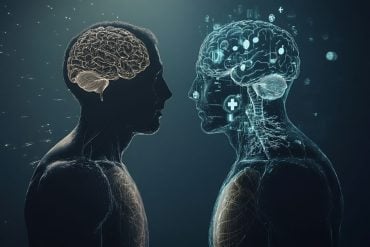University of Kansas researchers have found larger resting pupil size and lower levels of a salivary enzyme associated with the neurotransmitter norepinephrine in children with autism spectrum disorder.
However, even though the levels of the enzyme, salivary alpha-amylase (sAA), were lower than those of typically developing children in samples taken in the afternoon in the lab, samples taken at home throughout the day showed that sAA levels were higher in general across the day and much less variable for children with ASD.
“What this says is that the autonomic system of children with ASD is always on the same level,” said Christa Anderson, assistant research professor. “They are in overdrive.”
The sAA levels of typically developing children gradually rise and fall over the day, said Anderson, who co-directed the study with John Colombo, professor of psychology.

Norepinephrine (NE) has been found in the blood plasma levels of individuals with ASD, but some researchers have questioned whether these levels were just related to the stress from blood draws.
The KU study addressed this by collecting salivary measures by simply placing a highly absorbent sponge swab under the child’s tongue and confirmed that this method of collection did not stress the children by assessing their stress levels through cortisol, another hormone.
Collecting sAA levels has the potential for physicians to screen children for ASD much earlier, noninvasively and relatively inexpensively, said Anderson.
But Anderson and Colombo also see pupil size and sAA levels as biomarkers that could be the physiological signatures of a possible dysfunction in the autonomic nervous system.
“Many theories of autism propose that the disorder is due to deficits in higher-order brain areas,” said Colombo. “Our findings, however, suggest that the core deficits may lie in areas of the brain typically associated with more fundamental, vital functions.”
The study, published online in the May 29, 2012 Developmental Psychobiology, compared children between the ages of 20 and 72 months of age diagnosed with ASD to a group of typically developing children and a third group of children with Down syndrome.
Both findings address the Centers for Disease Control’s urgent public health priority goals for ASD: to find biological indicators that can both help screen children earlier and lead to better understanding of how the nervous system develops and functions in the disorder.
Notes about this autism spectrum disorder research
Colombo is the director and Anderson is research faculty member of the University of Kansas Life Span Institute, which focuses on neurodevelopmental and translational research across the life span.
Contact: Karen Henry – Kansas Life Span Institute
Source: The University of Kansas press release
Image Source: Eye image adapted from Flickr.com image by user Steve Jurvetson with the CC-by-2.0 license.
Original Research: Abstract for “Pupil and salivary indicators of autonomic dysfunction in autism spectrum disorder” by Christa J. Anderson, John Colombo and Kathryn E. Unruh in Developmental Psychobiology 2012 doi: 10.1002/dev.21051







